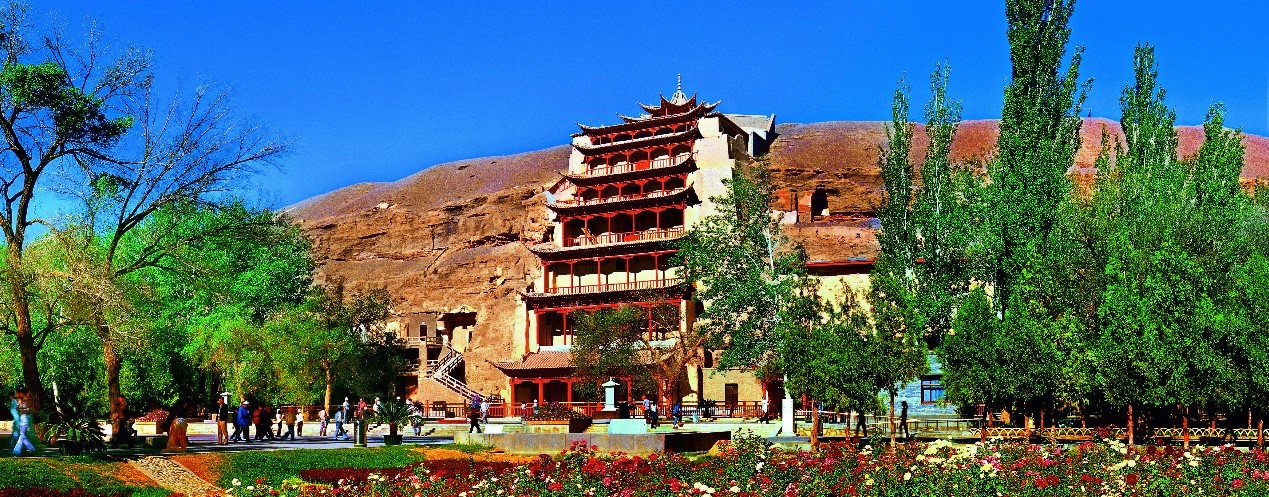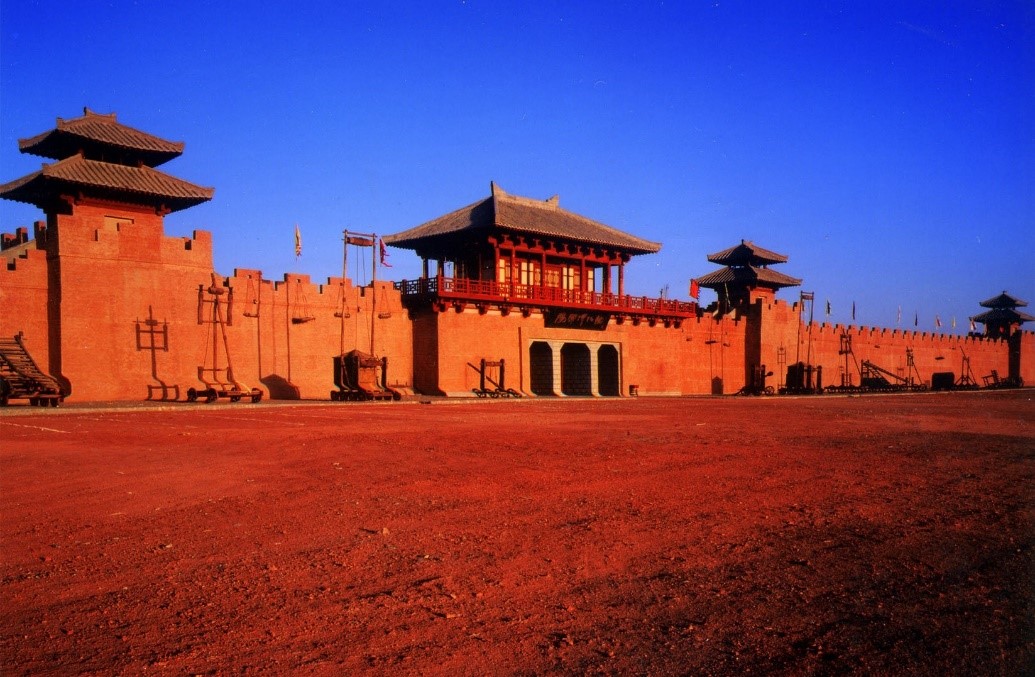Mogao Crottoes:Excavated since 1,600 years ago (366), Mogao Grottoes consists of 735 caves in the cliff wall of about 1,600 meters long, where there are murals of 45,000 square meters painted in different dynasties, more than 2,400 painted sculptures and other collections over 50,000, such as manuscripts, silk paintings, paper paintings, embroideries and so on. The Mogao Grottoes were inscribed on the World Heritage List in 1987.The Mogao Grottoes, which excavated in the sandy gravel beds formed 700,000 years ago, while the fadeless dyestuff used in murals was mostly derived from natural minerals. This make the Mogao Grottoes a perfect blend of geosciences and human treasure. The Dunhuangology originated at this location and the grottoes themselves serve as an art palace of ancient buildings, sculptures and murals, boasting immeasurable historical, cultural and scientific significance.

Yumen Pass: Located at 90km northwest of Dunhuang and known as “Xiao Fang Pan Cheng”, Yumen Pass is 24m long from east to west, 26m wide from south to north and 9.7m high for the walls. West door and north door are set respectively, covering a total area of 630 square kilometers. The four sides of the city wall were well-preserved with yellow plastic rammed earth. Being an important pass between the central and western regions on the way to the ancient Silk Road, it is also considered as an important place for troops.

Yangguan Pass: Yangguan Pass was built in the 1st century BC during the reign of Emperor Wu of the Western Han Dynasty. Like Yumen Pass, it used to be an important frontier pass and the earliest customs in China's Han and Tang dynasties. The Yangguan Pass is a strategic pass with the river at its back and echoes the Yumen Pass in the north and south. Together with Dunhuang Prefecture, a triangle was formed that could be easy to defend but hard to conquer. Yangguan Pass thus became an important pass for the Han Dynasty to defend against the invasion of nomads in the northwest, and an important gateway on the Silk Road from the Central Plains to the West Regions and Central Asia. There are many cultural relics and ruins such as ancient passes, ancient towns, ancient beacon towers, and ancient roads in the Han and Tang dynasties. Yangguan Pass is one of the important bases for academic research and exchange on Silk Road culture, Dunhuang culture, Two-pass Great Wall culture, and ethnic group culture in frontier regions.

The Great Wall of Han Dynasty:The Great Wall of the Han Dynasty was built in the Western Han Dynasty with the accessibility of the Silk Road. About 2,100 years ago, it stretched from east to west, starting from Dongjiandun in Guazhou County in the east, along the south bank of Shule River and ending at Yushuquan Basin in Dunhuang in the west, with a length of about 136 kilometers. The section of Danggu Beacon Tower is the best-preserved Han Great Wall in China. The Han Dynasty Great Wall here is 3 meters wide, 0.65 meters wide at the top, and about 2.95 meters high. All of them are made from local materials and compacted layer by layer with splendid achnatherum, loess, and gravel. It is the wisdom fruit of ancient working people in China. The Great Wall of the Han Dynasty played an important and positive role in military defense, transportation, cultural exchanges, commerce, and trade as well as the integration and unity of each ethnic group.
Hecang Castle Site: Hecang Castle Site is also called Big Fangpan Castle Site, 12 kilometers away from Yumen Pass in the west. The castle was built in the Western Han Dynasty in the shape of a square, 132 meters long from east to west and 17 meters wide from north to south. It was built by stamping earth between board frames and faced south. The castle is divided into three apartments inside. Each apartment has a gate to the south. There are two extra walls located in the east, west and north outside the castle. Now the first wall still remains debris, but the second wall only has mound marks in the north. Hecang Castle was built to hoard supplies reserve in ancient times. It provided food, clothing, etc., to the soldiers in Yumen Pass, Yangguan Pass and the Great Wall. Therefore, it had a great effect on the ancient military defense of northwestern China.
Desert Plant Landscape: Geopark territory is planted with the national second-level protection of plants like calligonum, glycyrrhiza inflate, bare fruit and national third-level protection of plants like populus, haloxylon and sandy tamarisk.
Populus Euphratica Forest: It is known as poon and is one of the oldest poplar species in the world. It is also considered as the “Living Fossil”. Populus has strong vitality and is known as the “three thousand year of populus". It provides not only the effects for wind and sand prevention, improvement of desert ecological environment, but also a good vegetation landscape for the visitors.
 简体中文
简体中文
